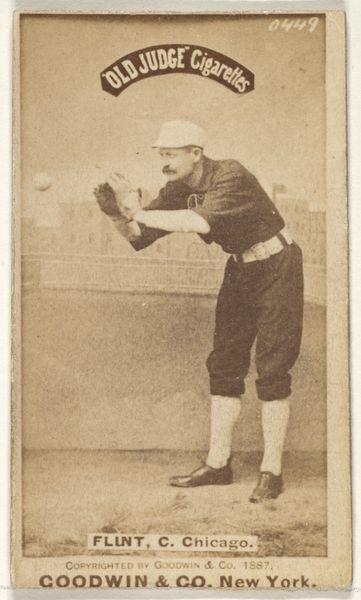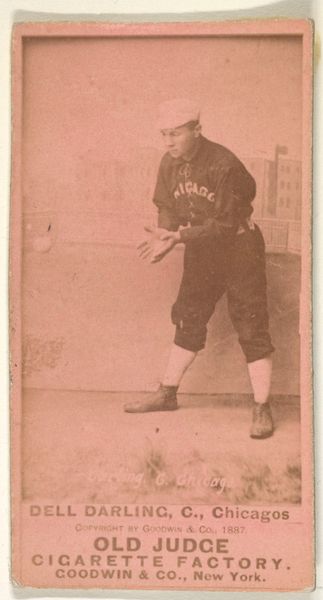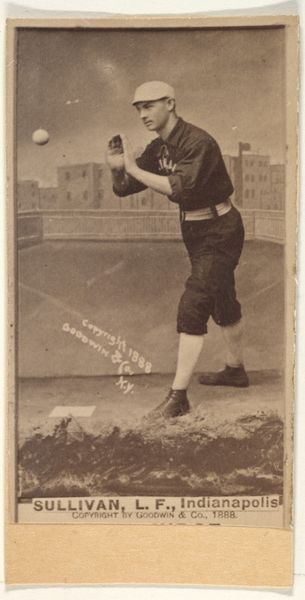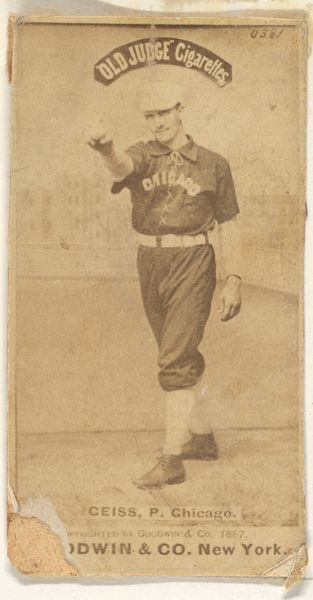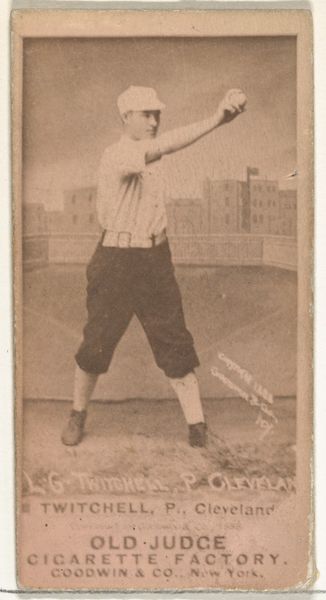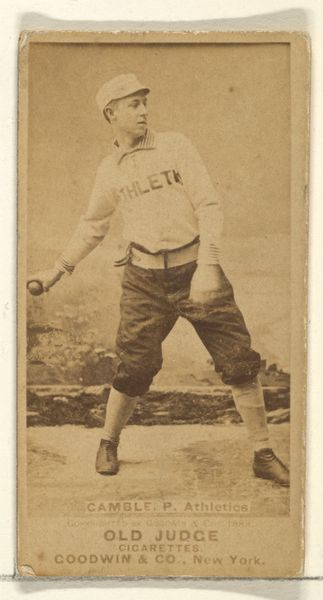
Fred "Dandelion" Pfeffer, 2nd Base, Chicago, from the Old Judge series (N172) for Old Judge Cigarettes 1888
0:00
0:00
print, photography
#
portrait
# print
#
baseball
#
photography
#
coloured pencil
#
men
#
athlete
#
realism
Dimensions: sheet: 2 11/16 x 1 3/8 in. (6.9 x 3.5 cm)
Copyright: Public Domain
Editor: This is a baseball card, a photographic print from 1888, featuring Fred "Dandelion" Pfeffer. It’s part of the Old Judge series, so called because it was included with Old Judge Cigarettes. The image is… sepia toned and captures a somewhat ambiguous moment on the field. What strikes you when you look at this from a historical context? Curator: It's a fascinating example of how photography was quickly integrated into commercial culture and how sports figures began to attain celebrity status. These cards weren't simply documenting the players; they were constructing a public image, tied to the consumption of tobacco, that fueled early sports fandom. The photograph itself probably captures a posed action scene – a somewhat artificial, controlled depiction intended for mass dissemination. What do you make of that manufactured quality? Editor: That's interesting. It definitely feels posed. So the action, although staged, represents the game in some way, but it's also advertising. Curator: Exactly. These images served a dual purpose, solidifying the idea of baseball as a developing national pastime, a representation of ideal american man and also shaping consumer behavior through promotional strategy. Think about the buildings visible in the background. Are those a part of the staged shot, or do they reflect something about Chicago at that time? How do these subtle inclusions shape public perception? Editor: I see what you mean. It's about curating a specific narrative for a new audience. I hadn’t thought of it like that, it feels really manufactured for public consumption. Thanks! Curator: Of course! Thinking about art as a constructed visual history, a designed public display is fundamental. I learned so much.
Comments
No comments
Be the first to comment and join the conversation on the ultimate creative platform.
